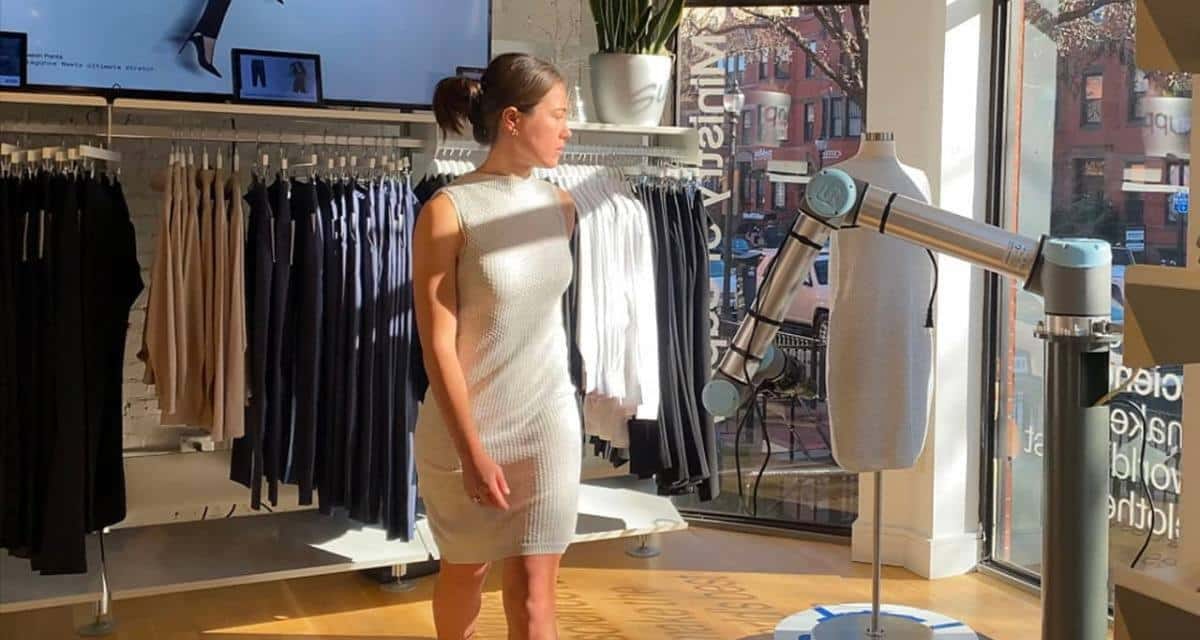Iterate Weekly - Issue 147
This week we're looking at spacial computing, VR biology class, another super portable scooter, heat-weaving dresses and The J. Crew story!
Welcome to issue 147 of Iterate Weekly.
Hope you’re all doing well. This is just a friendly reminder that you can always reply directly to these messages or leave a comment on the Substack post. Feedback is highly encouraged and I’m happy to answer any and all questions that come up.
Thank you as always for reading!
🤖 Tech
Spatial Computing vs. Mixed Reality
My wife and I were talking recently about the new Apple Vision Pro. And we were both trying to categorize exactly where it would fall in the long line of transcendent Apple products.
Is it really going to be the next big product launch for Apple or will it be a flop? Or maybe it’ll just be a stepping stone in what will someday become the product that changes the lives of everyday people?
Well, one thing is clear. Apple wants to categorize this produce in a very specific way. They are going out of the way to say the Vision Pro is a spatial computing device and not a virtual/augmented/mixed reality device.
Why does that matter? There are other VR and AR headsets on the market, but spacial computing is a frontier that Apple thinks it can define and hopefully dominate. They are going to need to convince consumers that they need a “spatial computer” more than a mixed reality headset. A device for spatial computing sounds like a real machine rather than just a toy used to play games in your living room.
With the release of the Vision Pro slated for February 2nd, we’ll soon get a better sense of the response to Apple’s new computing form factor. No matter what they call it, it could have trouble gaining traction until developers really figure out the best way to show off its capabilities.
🎓 Education/Productivity
VR Biology Class
Speaking of VR, I was really intrigued to see a new academic use for the technology recently.
It’s a partnership with a company called Dreamscape Immersive and it could very well be a glimpse into the way that biology will be taught in the future. In this case, the students are able to don their VR headsets to explore an alien planet and gather samples and make observations. This data can then be analyzed back in the real world like any other material captured in the field.
Over 12,000 students have taken the course at ASU and its success could help the technology branch out into other areas of study with chemistry, art history, and astronomy listed as possible next topics.
The possibilities for study abroad potential in virtual (and even otherworldly) environments is super exciting. Can’t wait to see how this technology evolves.
♻️ Health & Environment
Riley brings its super portable scooter to the US
I have another super portable scooter to look at this week. After getting excited about the Arma folding lunchbox scooter Kickstarter last week, now we have an actual product that is already on the market.
Riley Scooters will be launching their RS3 scooter in the United States this year and I’m pretty excited to see how it is received.
It may not be as compact as the Arma, but the specs should make up for that. It’ll get up to 15.5 mph with an estimated range of also 15.5 miles. But the folding mechanism is really where this thing shines. It weighs just 30 lbs. and should be perfect for taking on the train, bus, or even in the back of a taxi when needed. Its compact size when folded means it should even fit in some larger backpacks without needing a product-specific carrying bag which is nice.
It should launch in the US in April of this year and I will try to get my hands on one to test out. No official word on pricing but hopefully they can keep it below $1,000 USD to compete with some of the other lightweight commuter scooters on the market.
🛍 Grab Bag
Ministry of Supply is heat-weaving dresses
If you’re not familiar with Ministry of Supply, they’ve been making some of the most tech-forward, innovative clothing for quite some time.
The company has evolved quite a bit over the years after a rapid expansion and then a shutdown of all of their physical stores aside from their Boston headquarters. Their old San Francisco store offered an amazing same day delivery service that was a lifesaver for me on several occasions. Their lightweight dress shirts are some of the best in the business in my humble opinion.
Anyway, they’re always looking at new ways to make wardrobe staples that we’ve come to love for both men and women. Their latest endeavor involves using heat-sensitive yarn to weave the perfect dress.
While I’m no expert on dress fitting, this technology offers the kind of flexible fit that anyone would appreciate. The dress starts out in a loose, baggy form and can be worn that way. But because of its heat-sensitive yarns, it can be warmed up with a blowdryer-esque heating element in order to tighten the shape in certain areas. This heat-shrinking could allow for a more flattering fit that is catered to each customer.
It’s only in the testing phase right now with roughly 20 customers putting the dress through its paces. While the cost of the dress is currently $500, it will likely end up costing somewhere in the $200-300 range once production ramps up. The interesting thing is that it won’t need to be made in different sizes. It basically starts in a one-size-fits all configuration before being shaped to the wearer.
There is a chance that this tech isn’t quite ready for primetime but I love that Ministry of Supply keeps trying things like this. While I wish they still had a physical store on the West Coast, I’m tempted to scope out some of their online offerings and hopefully the heat-sensitive yarn finds its way into mens apparel soon.
💬 Quote of the Week
"That which is not good for the bee-hive cannot be good for the bees."
-Marcus Aurelius
📕Content Recommendation
The Kingdom of Prep: The Inside Story of the Rise and (Near) Fall of J.Crew
I can’t say that I’ve been a huge customer of J. Crew over the years. I do recall buying a few blazers that were a great deal back in those weird days when I had to wear a jacket to work. And there were definitely a few cardigans and maybe a khaki or two in my wardrobe rotation at some point.
Ok, so maybe I visited J. Crew stores more that I realized and that’s why I was so fascinated to read “The Kingdom of Prep: The Inside Story of the Rise and (Near) Fall of J.Crew” by Maggie Bullock.
Who knew that there was such an interesting story behind the chic clothes that really defined “preppy” fashion in the 80s and 90s before a decline and rebirth in the 2000s. What essentially started as a family mail-order catalogue business, became a pop culture force of nature before imploding under its own weight.
Whether you wear J. Crew clothing or not, it’s a really well-written exploration of the mysterious world of fashion. It was one of the better corporate tell-all books that I’ve read (and I’ve read quite a few) and it’s worth checking out even more if you remember flipping through the pages of J. Crew catalogues in your younger days.
Thanks for reading, I’ll see you next week!
Hey! Could you use some help establishing healthy habits? Do you have a big project or new business that you want to get off the ground but could use some advice? Maybe you could benefit from hiring me as your coach. If you’re interested, read more about my coaching services here, or go ahead and book some time on my calendar to discuss further.
Iterate is free today. But if you enjoyed this post, you should let me know that this writing is valuable by pledging a future subscription. You won't be charged unless I enable payments at some point in the future. Think of it like an IOU in a tip jar.







